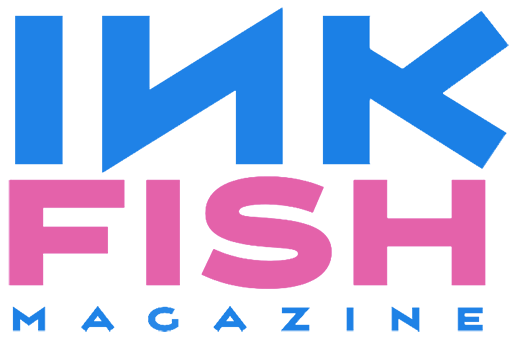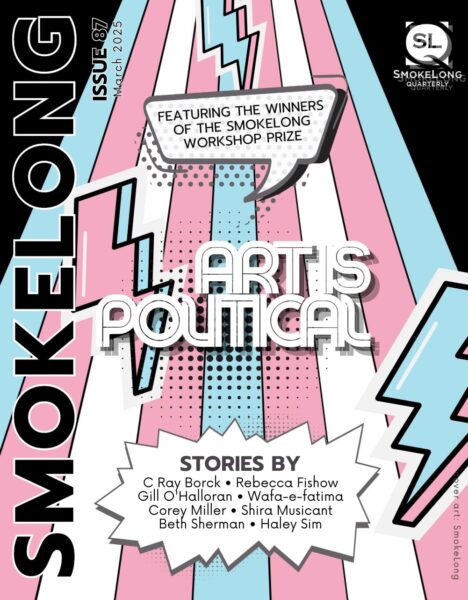Interview with Beth Sherman
Author
Questions by Kate Horsley
Can you tell us a little about your writing process? Where do you write from? What’s that space like? How do you approach each day of writing?
I’m a morning person so I like to get up and get started when my brain is still firing on all cylinders. Most days, I work from my office at home. (Though I can and have written anywhere – a park bench, a cafe, the subway). My office is a comfortable space and I have a mood board where I pin images that I think are interesting or are somehow related to what I’m working on at the moment. (Right now there are pictures of birds on it and strange looking flowers and moody landscapes). This might sound weird, but I approach each writing day a little worried that I have absolutely nothing new to say. The cursor blinks and I think now what? So sometimes I’ll read over what I’ve written the day before to jump start the process. Or I’ll tell myself it’s okay if what I write isn’t great, I’m just going to jot a few things down. There’s no better feeling than when it seems like the tank is empty and then an hour or two later, something unexpected appears on the page.
Who are your favourite flash writers and why?
There are so many! Kathy Fish, Sara Hills, Sarah Freligh, Sabrina Hicks, Matt Kendrick, Emily Rinkema, Ani King, James Montgomery, Dawn Miller, to name a few. I like their writing because it’s lyrical and gorgeous and surprising. Wonderful imagery. Stories that evoke an emotional response. And of course, they all know how to land the ending! I’ll read something by one of them and wish I’d written it, which is the highest compliment I can give.
We’re so excited to be publishing your brilliant writing in Inkfish again! The natural world plays fascinating and contrasting roles in ‘Daily Planner for an Anxious Planet’ and ‘Actually, there are eight of us’, your flash pieces from Inkfish Edition 4. How do you approach the natural world in your writing?
It’s an incredibly important narrative element. I like to make sure the reader has a clearly defined sense of the story’s setting. Using sensory details to describe sounds, smells, sights, etc. in the natural world strengthens whatever it is that I’m trying to get across. It’s a great opportunity to elevate my writing with similes, metaphors and specific details. Nature can also help define how a character is feeling, what they want, and whether they’re likely to get it or not.
Does planning and writing a micro or flash piece feel very different to writing a short story or longer prose piece? Do you feel there’s overlap with prose poetry in your work?
Great questions! I never “plan” anything I write so that part is no different. I usually start with the germ of an idea or an image, a character, an object, a scenario, and go from there. I think writing flash has made my overall writing stronger – no matter what genre it is. The main difference is concision. I look back at short stories and novels I’ve written and think: Did I really need this part? What purpose is it serving? What would be lost if I removed it? (Usually the answer is nothing). The main difference between my flash stories and my longer work is there’s more plot in the latter. This happens, then that happens, then this other thing happens. With flash, there’s no time for that, which is one of the things I like most about it! It’s interesting that you ask about prose poetry. I love writing prose poems – they’re my favorite poetic form. I’ve heard it said that flash tells a story, while prose poetry explores language and emotion in a more open-ended way. I don’t necessarily think that’s a hard and fast rule. I’ve written prose poems that could “pass” for flash and vice versa.
Flash, prose poems, novellas-in-flash, micros all feel like such current and evolving forms. What risks might writers take to push the envelope and what do you see flash fiction developing towards?
There are so many ways to take risks in short form fiction that probably wouldn’t work as well in a longer piece. I’ve told stories backwards, used different points of view (first person plural, third person plural), experimented with anaphora and epistrophe, explored the hermit crab form (lists, recipes, letters, instructions, etc.), told stories using only dialogue, written braided stories. There’s so much you can do! As our attention spans get shorter, I see flash continuing to grow and develop as an art form, gaining even more popularity.
As well as being a published author, you teach in the English Department at Queens College. How do you feel these two professions work alongside each other?
In the creative writing and CNF courses I teach, I see students struggle with the same types of things that I do. How to grab a reader’s attention. How to show and not tell. How to avoid the reader saying, “so what?” How to know what to cut and what to keep in revision. It’s extremely humbling. We also do a fair amount of close reading. I put many of my favorite flash stories on the syllabus and we discuss what narrative techniques have been used and what we could borrow from these talented writers in our own work. Some flash authors have even visited my classroom virtually, which the students love!
What’s the most unexpected, adventurous, interesting, or intriguing thing that’s happened to you during the writing or researching process?
I like it when something I see out in the world leads to a totally unexpected story. I get to Queens College at 5 a.m. to beat the traffic and have some quiet writing time in my office there. It’s usually pitch black outside and there’s no one else around except for the security guys and an occasional sanitation truck. One morning, I saw a creature lurching from side to side on the Quad. It was small and furry and had other smaller furry things clinging to its back. I took a picture and Googled what I’d seen. It was an opossum and her babies – in the middle of New York City! It led me to write a flash story called “Creatures” about a college professor who sees an opossum in the early morning hours, along with the ghost of her dead father.
We’d love to hear about other pieces of yours that are about to emerge or have recently come out, as well as what you’re working on now!
I have a story called “Natural” in Milk Candy Review [coming out on June 7th] about a taxidermist who stuffs her mother. I love that journal and had submitted two other stories before this one was accepted. I also have a piece in the Flash Villains issue of Molotov Cocktail, titled “Catwoman ponders the intangibles while drinking a whisky sour at McDevitt’s Ale House in Gotham City.” That one was pure fun to write. And I’m currently working on two novellas in flash. One is about a fractured family. The other is about a character whose mother is suffering from Alzheimer’s. Why write only one NIF when you can do two, right?
About Beth Sherman
Beth Sherman’s writing has been published in more than 100 literary magazines, including Flash Frog, Gone Lawn, Tiny Molecules, 100 Word Story, Fictive Dream, and Bending Genres. She’s a submissions editor at Smokelong Quarterly and the winner of Smokelong’s 2024 Workshop prize. Her work is featured in Best Microfiction 2024 and the upcoming Best Small Fictions 2025. A multiple Pushcart and Best of the Net nominee, she can be reached on X, Bluesky or Instagram @bsherm36.



